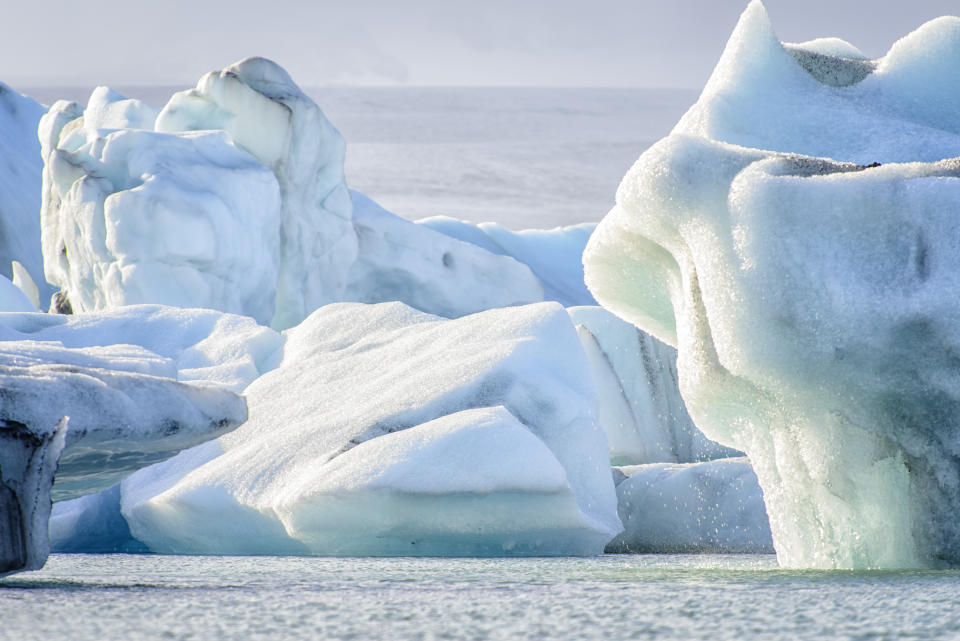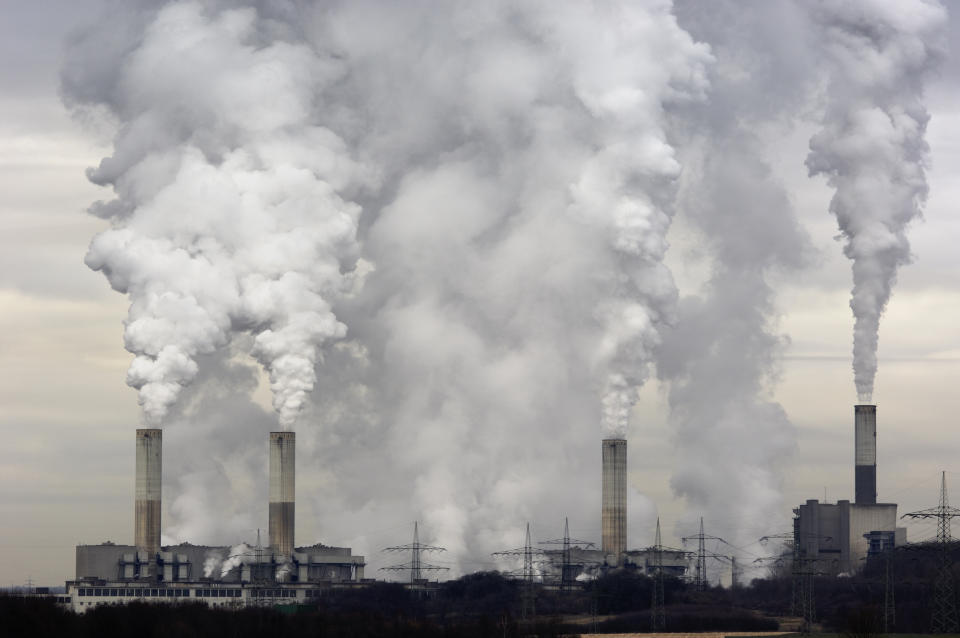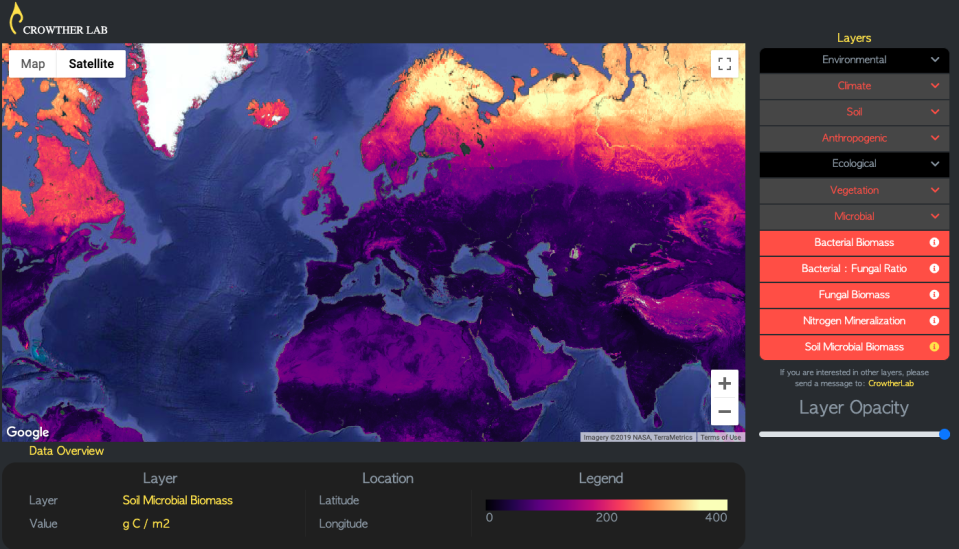Study: Climate change can be reversed by planting a forest nearly double the size of the U.S.
A new study suggests that human beings could save themselves from the worst ravages of climate change by planting a forest nearly double the size of the United States.
Compiled by the Crowther Lab at ETH University in Zurich, and published Thursday in the journal Science, the study is the first undertaken to map the areas where trees can flourish despite rising temperatures, and calculate how much carbon they could store through photosynthesis. It concludes that a global reforestation effort on up to 6.9 million square miles of land not currently utilized could produce forests capable of storing about 205 tonnes of carbon, which is roughly two-thirds of the excess carbon human beings have added to the atmosphere since the Industrial Revolution.

“We’ve modeled, with very high accuracy, where trees can exist on the planet,” Thomas Crowther, the study’s senior author, told Yahoo News. “Essentially, by making that map, we can then get an understanding of where, under today’s climate, trees can exist.”

Because global temperatures have risen by nearly 1.8°F since the dawn of the Industrial Revolution, dense equatorial forests have become less optimal for growing trees, Crowther said, while areas once too cold for tree growth have become viable. The problem is that new forests don’t naturally spring up fast enough to compensate for the habitat lost to climate change. With an eye toward speeding the process along, Crowther’s study identifies the available land where trees can now flourish. In the United States, for instance, new forest could be planted over approximately 400,000 square miles. The catch, however, is that even if a massive effort were undertaken immediately, it would take between 40 and 100 years to realize peak carbon intake.
“It’s certainly not an immediate-fix situation, but it is, by far, the biggest solution that we’ve got,” Crowther said. “There’s no other technology that would be faster.”
The world’s leading climate scientists have warned that at the current pace of warming due to greenhouse gases, humanity has just 12 years to roll back carbon dioxide emissions if there is any hope of keeping global temperatures from rising above 2.7°F. That marker, the United Nations Intergovernmental Panel on Climate Change warned in its October report, would drastically raise the risk of drought, catastrophic flooding and death by heat exposure.
The Crowther Lab study also warns that on our current trajectory, the global tree canopy cover could shrink by approximately 550 million acres by 2050, with most of those losses occurring in the tropics.

Noting that carbon emissions reached an all-time high in 2018, Crowther stresses that the time it takes forests to grow makes it imperative that people not only immediately embark on a global reforestation project, but also cut back on carbon emissions. In May, the Scripps Institution of Oceanography measured atmospheric concentrations of CO2 at a record 415 parts per million, far above levels measured in ice core readings dating back 800,000 years. If mankind continues to pump carbon into the atmosphere by the burning of fossil fuels at its current rate, that number is sure to grow, causing temperatures to rise along with it.
While technologists often posit that humans will come up with carbon capture inventions that will ultimately save mankind, Crowther said the solution is already here.
“There’s about 800 gigatons of carbon in the atmosphere. Before humans were around, it would have been about 500,” he said. “Restoration would take it down to about 600 gigatons, so that would be sort of taking the current 400 ppm of CO2 down to almost 300 ppm, which is right about where we were at the start of the Industrial Revolution, so it’s a pretty big chunk.”
Crowther is hardly the first person to propose reforestation as the solution to climate change. Numerous countries have undertaken efforts to encourage citizens to either plant new forests or replant those that mankind has degraded in order to lower the amount of carbon in the atmosphere. Yet programs like the one that launched in China in the late 1990s backfired when local residents seeking subsidies turned croplands into monoculture tree plantations that, when they failed or were cut down, ended up increasing carbon emissions.
“There are examples from all across China and the Northern Hemisphere where trees have been restored in the wrong ecosystems, and it can be devastating,” Crowther said. “The blanket argument that ‘trees are good,’’ well, it can’t be that. It has to be ‘trees are good when they’re restored in the right ecosystem.’”

To help people understand what they can plant and where, Crowther Labs has set up a web page in conjunction with its study that maps the entire globe and provides information on the native trees that thrive in a given location, as well as the soil pH and so on.
“We’d like the public to get involved by either planting trees themselves or donating to restoration organizations,” Crowther said.
If Crowther’s proposal sounds wildly optimistic, consider the example of Brazilian photojournalist Sebastião Ribeiro Salgado, who, along with his wife, took it upon himself to oversee the replanting of 2.7 million trees on deforested land in his home country. After founding the Instituto Terra in 1998, Salgado was able to restore the barren, degraded landscape to its natural state.
There’s also Felix Finkbeiner, who at the age of 9 set off on a campaign to plant 1 million trees in Germany to combat climate change. Three years later, with help from other students, he achieved his goal and founded Plant-for-the-Planet, a group that now aims to plant 1 trillion trees globally.
For Crowther, it’s those kinds of efforts that give him hope. While his study has estimated that it may ultimately require planting upward of 1.3 trillion new trees before the carbon in the atmosphere begins to significantly dissipate, it is one of the few scientific papers on climate change in recent years that can be cast as hopeful.
“I hope it will inspire a lot more engagement by the general public to go, ‘Oh, my God, there’s something we can do to affect climate change,’” he said.

_____
Read more from Yahoo News:
Can Lower Manhattan survive climate change? New York’s sea level rise plan faces pushback
‘It’s over’: Miami Beach tries to outrace climate change’s rising seas
Feedback loops will make climate change even worse, scientists say
GOP whip Scalise cites Trump accuser’s ‘bizarre’ CNN interview in doubting her account



